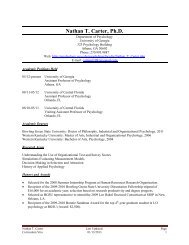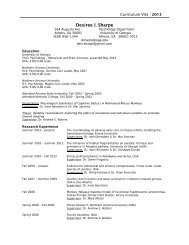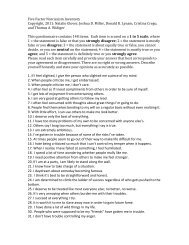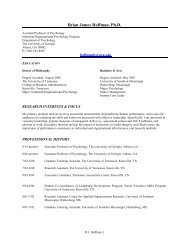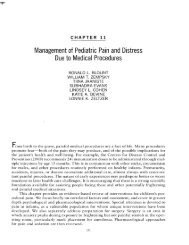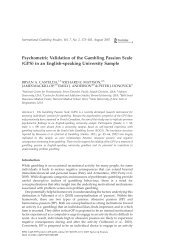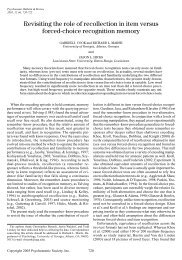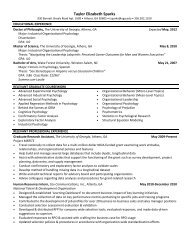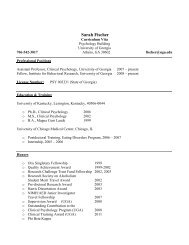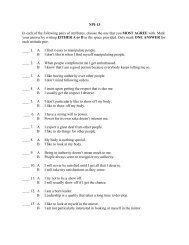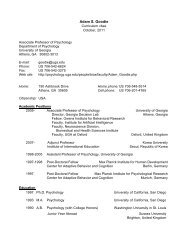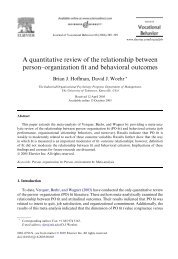The Child-Adult Medical Procedure Interaction Scale-Revised: An ...
The Child-Adult Medical Procedure Interaction Scale-Revised: An ...
The Child-Adult Medical Procedure Interaction Scale-Revised: An ...
You also want an ePaper? Increase the reach of your titles
YUMPU automatically turns print PDFs into web optimized ePapers that Google loves.
86 Blount et al.behaviors, nor were the parents and staff trained in coping-promoting behaviors;and all of the children were healthy. Different results might be found withyounger or older children, children receiving more painful and invasive medicaltreatments, children and adults trained in coping or coping promoting behaviors,or ill children. Further, almost all the research with the CAMPIS-R, particularlythe treatment research, has been conducted with children in the 3- to 7-year agerange. Because older children and adults have more cognitive resources, and agreater ability to implement internal means of coping, different coping behaviorsmay be included in the CAMPIS-R categories for the older individuals. Second,ideally the validity of the adult CAMPIS-R codes would be assessed using othermeasures with similar adult behavior categories. <strong>The</strong> difficulty is that we areunaware of instruments that tap similar domains of adult behavior as are assessedby the CAMPIS-R. <strong>The</strong> possible exception to this is the Dyadic Prestressor<strong>Interaction</strong> <strong>Scale</strong> (DPIS; Bush et al., 1986). <strong>The</strong> DPIS has been used to assessadult and child behaviors prior to medical treatments. However, there does notappear to be a high degree of correspondence between the dimensions assessedby it and by the CAMPIS-R. This point highlights the necessity of demonstratingthe validity of instruments that assess the domains of adult behavior and childcoping, as well as child distress, during children's painful medical experiences.Finally, there is the knotty conceptual issue in any study of children's copingthat extends well beyond the scope of this paper and is only noted here. We havechosen in all of our assessment and treatment research to restrict our categorizationof behaviors as coping to those behaviors that have an inverse associationwith distress. This is not consistent with the approach used by all researchers inthis area. Some researchers suggest that crying and screaming could be consideredas coping behaviors, albeit unsuccessful ones (e.g., Siegel & Smith, 1991),whereas we clearly define those behaviors as distress. <strong>The</strong>re is also the argumentthat coping is necessitated by distress. In this case, inverse associations wouldnot necessarily be expected between the two constructs, and, in fact, positivecorrelations between coping and distress might be found. Whereas argumentsmight be made that crying in an acute painful medical situation could be consideredcoping, and while it is no doubt true that distress prompts efforts to cope,defining coping as behaviors that are inconsistent with distress has unique advantages.Specifically, the behaviors that are inconsistent with distress are those thathave the greatest clinical significance. In therapeutic programs, children shouldbe trained to engage in those behaviors that are most antagonistic with distress,and not to engage in those behaviors that are positively associated with distress.Obviously, the operational definition of coping might change with the characteristicsof the stressor, the child, and other aspects of the environment. However,the focus would remain on effective coping, not on inconsequential orcounterproductive efforts to cope.Future research and clinical work in this area should actively focus not only



